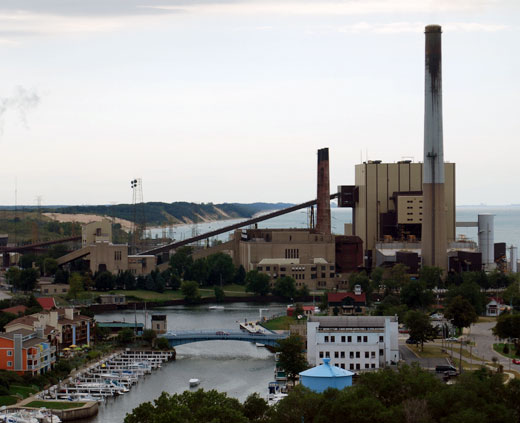
America is addicted to coal, and that addiction is killing poor people and people of color, according to a new report published by the NAACP and other environmental justice organizations.
According to the report, emissions from 431 coal plants across the country cause 30,000 premature deaths and tens of thousands incidents of chronic respiratory health problems like asthma, bronchitis and lung cancer each year. According to the study, titled “Coal Blooded: Putting Profits Before People,” Sulfur dioxide (SO2) and Nitrogen Oxide (NOx), coal plants produce nearly all of the SO2 and fine particle pollution in the U.S.
Coal-powered plants produce about 44 percent of the electricity used in the U.S. Ten states use about half of the total amount of coal-fired electricity produced in the whole country.
More than 8 million people live within three miles of a coal power plant, and those people are disproportionately poor or people of color. The average per capita income of those people total less than $19,000, substantially lower than the national average. About 3 million are people of color, the report found.
The report also revealed the locations of the worst coal plants in the countries. These “failing plants” produce the most pollution and impact the largest number of poor and people of color.
To be precise, 90 “failing plants” across the country produced a quarter of SO2 and one-fifth of NOx emissions in the entire country. More than half of the 4.7 million people who live near these plants are people of color.
Of the 90 “failing plants,” the report scrutinizes the 12 worst offenders. Three are owned by Edison International and are located in Illinois. PSEG owns two of the worst offenders in Connecticut and New Jersey. Duke Energy, DTE Energy, and Dominion are among the companies whose plants create the greatest harm.
Detroit, Michigan is host to one of the worst pollution-producing plants in the country. The River Rouge Power Plant (DTE Energy), located on the southwest edge of the city produces more than 13,000 tons of SO2 and 4,658 tons of NOx each year.
The plant is just five miles from downtown Detroit and just across the Rouge River from the only major Latino district in the city, known as “Mexican Town.”
Of the residents who live within three miles of the River Rouge plant, more than 65 percent are African Americans and Latinos. Average income for people living in the area is just over $13,000 each year. The study attributed 44 premature deaths and hundreds of asthma attacks each year to the pollution from just this one plant.
Another deadly culprit is the Hammond, Indiana plant owned by Dominion. Located on outskirts of Chicago, this plant emits almost 17,000 tons of SO2 and NOx pollution. Of the people living within three miles of the plant, almost 80 percent are African Americans and Latinos.
In that same corridor along the southern edge of Lake Michigan between Chicago and the Michigan border are six other coal-fired power plants that contribute to the poor health and premature deaths of mostly poor communities of color.
The authors of the report called for immediately closing the 90 “failing plants.” While they total about 20 percent of the coal-fired plants in the country, they produce less than 10 percent of its electricity.
In addition, closing those plants would reduce the number of people living within three miles of a coal-fired plant by 58 percent and reduce the number of emergency room visits, deaths and chronic illnesses by thousands each year.
Increased environmental protections and subsidies for clean energy alternatives on the federal level are among the ways to reduce pollution.
Above all, however, local communities should hold local and state elected officials as well as energy companies accountable.
“Community organizations must engage directly with plant owners to advocate for their rights to clean air and negotiate regarding plant closure and development of alternative electricity generating and revenue generating industries,” the report concluded.
Photo: Michigan City, In., power-generating station. Lotzman Katzman/ cc by 2.0/ Flickr










